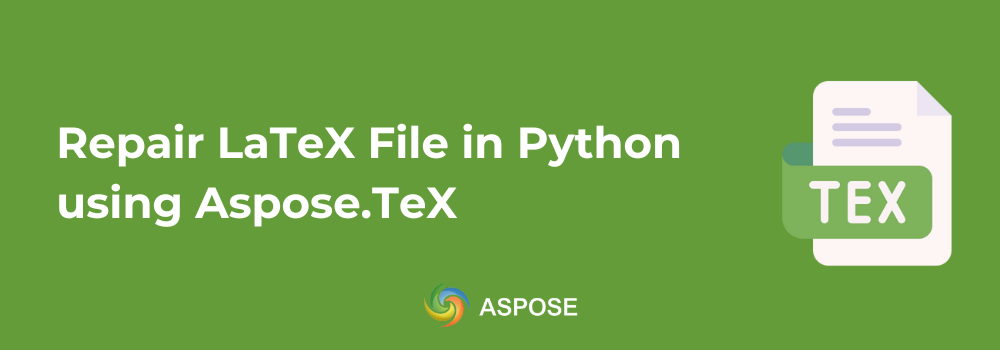This blog post gives a programmatic solution to fix corrupted LaTeX files. Aspose.TeX for Python via .NET provides classes and methods to repair LaTeX file in Python. By opting for this LaTeX SDK, you can process LaTeX/TeX files programmatically. It is highly efficient, time-saving and brings robustness in developing a LaTeX file editor. Moreover, a few lines of code can recover broken content and restore document structure. So, we will run through a working code snippet that processes an invalid LaTeX file and repairs it in no time. Let’s get started.
LaTeX SDK Installation
The whole installation process is about running the following single command:
pip install aspose-tex-net
Or you may download the SDK files.
Repair LaTeX File in Python - Code Snippet
In this section, you will see how a few lines of Python code can help you develop a LaTeX file editor programmatically.
Steps:
- Apply the Aspose.PSD license.
- Create repair options by instantiating an object of the LaTeXRepairerOptions class.
- Specify a file system working directory for the input/output.
- Run the repair process by calling the run() method.
Copy this code snippet and run it on your server to repair LaTeX file in Python:
Output:
Have a Question?
You can ask your questions on our forum.
Get a Free License
You may avail a free temporary license to try Aspose.TeX for Python via .NET.
Conclusion
You can save time and enhance productivity in working with LaTeX/TeX files. Aspose.TeX for Python via .NET is an enterprise-level LaTeX SDK to manipulate and repair LaTeX file in Python. Moreover, this solution is highly reliable and smooth. You can visit the documentation and API refs for further exploration. The GitHub repo contains the code examples covering various scenarios.
FAQs
Q: How to recover a corrupted LaTeX file?
A: It is quite easy to repair a LaTeX file programmatically. Aspose.TeX for Python via .NET has exposed features to fix LaTeX files. Please visit this link.
Q: What is LaTeX used for?
A: LaTeX is used for creating high-quality documents, especially those containing complex mathematical formulas, scientific notations, and structured formatting.
